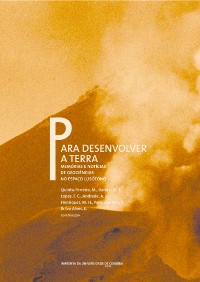Please use this identifier to cite or link to this item:
https://hdl.handle.net/10316.2/31432| Title: | Análise empírica da fragilidade ambiental da bacia do rio Verde: Paraná, Brasil | Other Titles: | Empirical analysis of environmental fragility of the Rio Verde basin: Parana, Brazil | Authors: | Passos, E. Muratori, M. Caneparo, S. C. |
Keywords: | Basin area;Potential fragility;Eminent weakness;Bacia hidrográfica;Fragilidade potencial;Fragilidade emergente | Issue Date: | 2012 | Publisher: | Imprensa da Universidade de Coimbra | Journal: | http://hdl.handle.net/10316.2/24404 | Abstract: | The Rio Verde Basin, the area object of the present study, located in the Metropolitan
Region of Curitiba, Paraná ‑
Brazil, has, among its many uses, the water supply
to the Refinery Presidente Getúlio Vargas ‑
REPAR, owned by the oil company Petrobras.
Given the forms of sprawl in this basin over the years, there is a series of environmental
imbalances, which can deteriorate the quality of its waters. In this context, it was sought to
evaluate the physical and environmental characteristics of the basin, identifying the levels of
potential and eminent fragility resulting from the geological and geomorphological processes,
integrating aspects of tectono‑lithological
and structural interaction with the past and present
characteristics, such as climatic, topography, soils and vegetation and human action. For this
analysis, the methodology established by Tricart (1977) was adopted, related to ecodynamic
units, classifying as stable, inter grades and strongly unstable. The results served as input to
the establishment of eminent and potential fragility of the basin to be used in planning and
management in a sustainable manner. A Bacia do Rio Verde, área‑objeto do presente estudo, localizada na Região Metropolitana de Curitiba, Paraná ‑ Brasil, tem, dentre seus diversos usos, o fornecimento de água para a Refinaria Presidente Getúlio Vargas – REPAR, pertencente à petrolífera Petrobras. Tendo em vista as formas de ocupação desordenada dessa bacia ao longo dos anos, existe uma série de desequilíbrios ambientais, os quais podem deteriorar na sequência, a qualidade de suas águas. Nesse contexto, procurou‑se avaliar as características físico‑ambientais da bacia quanto a sua capacidade de suporte, identificando‑se os níveis de fragilidade potencial e emergente, resultante da atuação de processos geológico‑geomorfológicos, integrando os aspectos litológicos e tectono‑estruturais em interação com as características climáticas pretéritas e atuais, o relevo, os solos e a vegetação, frente à ação humana. Para essa análise, foi adotada a metodologia que tem como base os critérios estabelecidos por TRICART (1977) relacionados às unidades ecodinâmicas, classificando os meios em estáveis, intergrades e fortemente instáveis. Os resultados obtidos serviram como subsídio ao estabelecimento da fragilidade potencial e emergente da bacia, a serem utilizadas no planeamento e gestão, de forma sustentável. |
URI: | https://hdl.handle.net/10316.2/31432 | ISBN: | 978-989-26-0531-9 (PDF) | DOI: | 10.14195/978-989-26-0531-9_11 | Rights: | open access |
| Appears in Collections: | Para desenvolver a Terra: memórias e notícias de Geociências no espaço lusófono |
Files in This Item:
| File | Description | Size | Format | |
|---|---|---|---|---|
| 11-para_desenvolver_a_terra_artigo.pdf | 1.42 MB | Adobe PDF |  |
Items in DSpace are protected by copyright, with all rights reserved, unless otherwise indicated.
